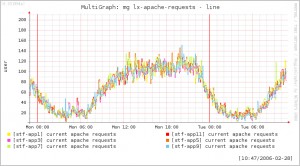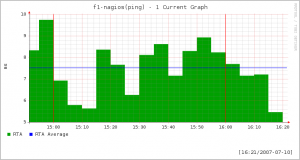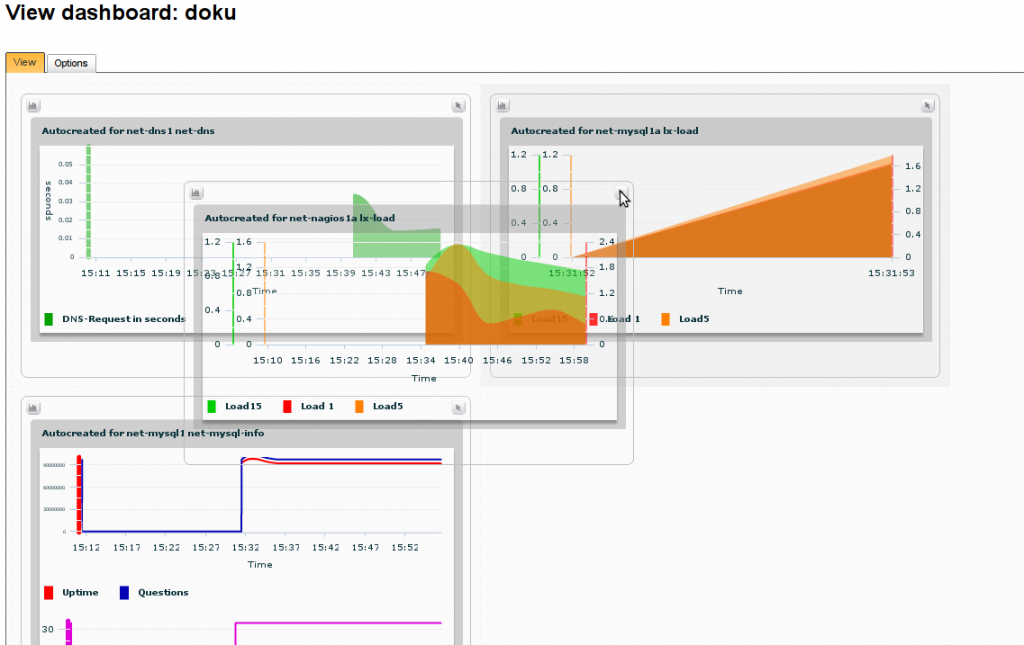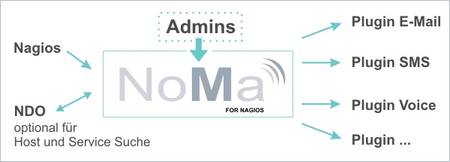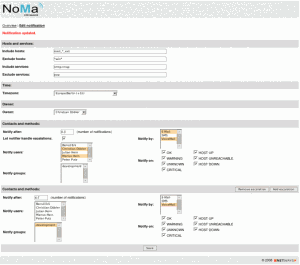Grafische Tools zur Konfiguration von Nagios und Icinga. Ein Thema – ein Dauerbrenner. So sehr diese Tools die Gruppe der Administratoren polarisiert, ist es doch oft unerlässlich sie einzusetzen. Sei es aufgrund unerfahrener Admins die mit Linux Systemen nicht vertraut sind oder eine Umgebung schlichtweg so groß und komplex geworden ist, das Schreiben und Pflegen von Config-Files Unmengen an Zeit verschlingt.
So haben wir uns Beispielsweise in einem aktuellen Großprojekt ebenfalls für ein grafisches Tool entschieden. Das geplante Endstadium (3.000 Hosts mit 45.000 Services auf aktuell 5 Icinga Clustern und Master-/Slave-Environment) ließ uns aber auch nahezu keine andere Wahl. Der Pflegeaufwand bei händischem Editieren wäre angesichts der vom Kunden prophezeiten Änderungs- und Wachstumsraten enorm.
In den nächsten Monaten möchte ich mich hin und wieder mit einem Tool befassen. Die aktuelle Auswahl besteht aus:
- LConf
- NConf
- Lilac
- NagiosQL
- NagiosAdministrator
Zu prüfende Kriterien sind:
- Installationsvoraussetzungen – Wie schwierig ist die Installation? Was wird alles benötigt?
- Handling / Usability – Wie kann ich konfigurieren? Wie benutzerfreundlich ist es?
- Funktionsumfang – Was wird unterstützt? Was wird nicht unterstützt?
- Enterprise Environments – Mehrere Instanzen? Master / Slave Umgebungen?
- Datenimport – Kann ich meine bestehende Konfiguration beibehalten?
- Sonstiges – Raum für sonstige, positiv aufgefallene Features
Weitere Wünsche zu Tools und Test-Kriterien sind jederzeit willkommen.
Viel Spaß!

 In den letzten Wochen habe ich mich an dieser Stelle ausführlich mit Jasper-Report beschäftigt. Da wir Jasper stark zunehmend in unseren Kundenprojekten einsetzen auch im Bereich Managed Service darauf zurückgreifen, lag die Serie sehr nah und ich hoffe soweit die wichtigsten Kernaspekte getroffen zu haben.
In den letzten Wochen habe ich mich an dieser Stelle ausführlich mit Jasper-Report beschäftigt. Da wir Jasper stark zunehmend in unseren Kundenprojekten einsetzen auch im Bereich Managed Service darauf zurückgreifen, lag die Serie sehr nah und ich hoffe soweit die wichtigsten Kernaspekte getroffen zu haben.

